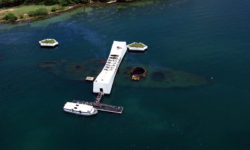Volcanoes National Park on the Big Island
Hawaii is a beautiful vacation destination. It makes for either a quiet and relaxing vacation consisting of countless hours lying on a beach or a wildly active vacation sure to please event the most avid thrill seeker. What thrill seeking vacation would be complete without exploring Hawaii Volcanoes National Park (HAVO). The national park occupies a vast array of terrain ranging from tropical beaches to the sub arctic Mauna Loa summit. The huge park has two active volcanoes.
Kilauea Caldera is the youngest and most active volcano on earth. The landscape is amazing, complete with hardened lava and dozens of craters. The park has 140 miles of hiking trails and is open to the public for camping. The park is over 333,000 acres of land so plan to stay a while if you truly want to explore the park. If you don’t have a lot of time, you should plan to at least drive through the park. It is worth the hour or so that it will take you to see everything. The volcano erupts regularly, so in most cases you will get to see some sort of lava flow. However, don’t expect to see eruptions spewing into the sky like in the movies. The flow is fluid and constant, not nearly as dramatic as Hollywood depicts.
The terrain changes so frequently due to the ever changing lava flow that it makes it difficult to follow maps, however the most up to date versions will be available at the visitor’s center. The map can be used for driving as well as hiking. The park has a hot line that tells you what is happening with the volcanoes that day and where to best view the lava flow.
Unlike the rest of Hawaii the weather can change very quickly in the park. The temperatures can be about 15 degrees cooler here than in Kona, so dress appropriately. The park can also have blistering heat from the sun’s reflection off of the lava flow. It can be hot and steamy one minute and change to a chilly downpour of rain with little or no warning.
If planning to visit the volcanoes you should be prepared and dress appropriately. Wear hiking shoes or boots; bring sunscreen and lots of water. The heat can cause dehydration quickly so be prepared with lots of fluids. Always follow the signs and stay on the trails. Fatalities do happen here at HAVO. The most common are due to people wandering off and getting lost in the park or people getting too close to newly formed lava paths. These lava flows can collapse causing injuries, or even worse death.
If and when the lava reaches the ocean, sulfuric acid and hydrochloric acid permeate the air. These gases are toxic. Every one should be careful, especially pregnant women, young children and people with upper respiratory problems. The smell of sulfur is strong in the air.
Whether it’s magnificent hiking trails you seek, or simply visiting a volcano be sure to put HAVO on your list of things to see.


